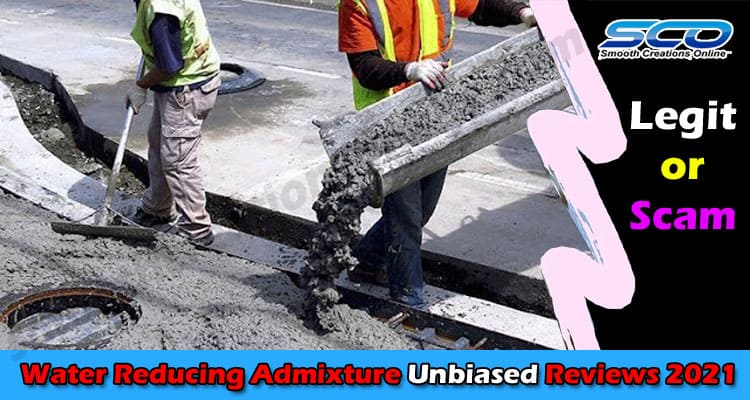Chemical admixtures are an integral component of the concrete mix. They contribute to enhancing the quality of concrete and reducing construction costs. Prevailing concrete and air temperatures, volume, and type of cement plus mixing time all determine the effectiveness of the admixture component.
Admixture classification is done based on function. As the name suggests, a water reducing admixture lowers the water content that a concrete mixture otherwise demands by around 5 to 10%.
Concrete treated with this admixture displays higher strength despite having a lower water-cement ratio. When you require more consistent cement setting time, opt for mid-range over standard water reducers.
Table of Contents
Recommended Concreting Practice
Water reducers improve concrete’s properties. You can achieve a desirable slump by mixing less water and still end up with strong, durable concrete. The secret to making high-quality concrete lies in reducing the water-cement ratio.
With admixtures, you can even restore concrete otherwise rejected because of unexpected project delays or complications. In addition, they allow you more control over problematic concrete. Should you need to modify the fresh concrete’s characteristics, control set time, or enhance workability, admixture inclusions make it happen.
Water reducing admixtures, in particular, work well for concrete pumping applications as they improve concrete flowability and reduce segregation. Based on the water reduction range, water-reducing admixtures are divided into three broad categories: low, medium, and high.
Group Properties of Water Reducing Admixtures
As the water reducing admixture category advances, the percentage of water reduction and slump range (in inches) correspondingly increases. The mid-range admixture goes a step further than the low-range group by reducing stickiness and improving finishing besides increasing slump.
Mid-range water reducers are particularly helpful in warm weather as they delay the initial set of concrete and keep it workable longer.
When you require high-performance concrete, the high-range admixture delivers. You can look forward to a slump range of 8 inches or greater and water reduction ranging between 12% to over 30%.
For precast structures, high early strength without set retardation and low permeability are desirable. This is when using the high-range category of water-reducing admixtures is preferable as it ticks these checkboxes.
Working of Water Reducing Admixtures
By neutralizing solid particle surface charges, these admixtures ensure surfaces carry like charges which tend to repel each other. All this reduces cement particle flocculation, thereby allowing for better dispersion. Thus, as the viscosity of the cement paste decreases, it results in a greater slump.
The idea behind developing a mid-range water-reducing category of admixtures was to increase slump beyond what regular water reducers achieve. The best part is the absence of excessive retardation. Superplasticizers or high-range water reducers are apt for high-performance concrete applications.
Without risking segregation or compromising concrete strength, superplasticizers convert a 3-inch slump to 9-inches. Better cement dispersion is achievable with water-reducing admixtures. As the exposed surface area increases, it allows for the complete hydration of cement particles.
Water Reducing Admixture Types
Superior quality concrete admixtures include the water reducing variety. The three types of water-reducing admixtures available with leading concrete admixture suppliers and manufacturers are:
Sodium Lignosulphonate
When used in a mortar, this common water reducer improves the overall strength and fluidity of concrete. Sodium lignosulphonate serves three functions of venting, dispersion, and initial hydration inhibition.
Sodium Naphthalene Sulfonate (SNF)
Also considered a high-range water reducer, sodium naphthalene sulfonate has an excellent spreading effect on powder materials like cement. Its water reduction rate can reach up to 25%. SNF is compatible with other concrete admixtures and adapts well to various cement types.
Polycarboxylate Superplasticizer (PCE)
With this advanced, high-range water reducer, you are assured of desirable application prospects, the best all-around performance, and the highest technological content. Thus, PCE is an ideal admixture that yields high-performance concrete without pollution. Besides, PCE has good cement adaptability and does not alter the cement setting time.
Recommended Usage
The recommended proportion of water reducers in fluid ounces is to be mixed per hundred pounds of cement. A seasoned admixture supplier understands the unique properties of water reducers, and hence, can correctly guide you on its correct dosage and application.
Usually, low and mid-range water-reducing admixtures are incorporated with the concrete upfront. As regards the high-range category, preferably add it just before placement at the construction site. Using a water reducer for precasting increases the early age strength of the concrete and eases its placement.
Source high-quality admixtures from a reputed construction chemical company to assure fair prices and enhanced consumer experiences. When you opt for a supplier with impressive certifications to their credit, you can be sure the service provided is professional.
Also Read – 4 Surprising Reasons to Use Casein Protein Powder


